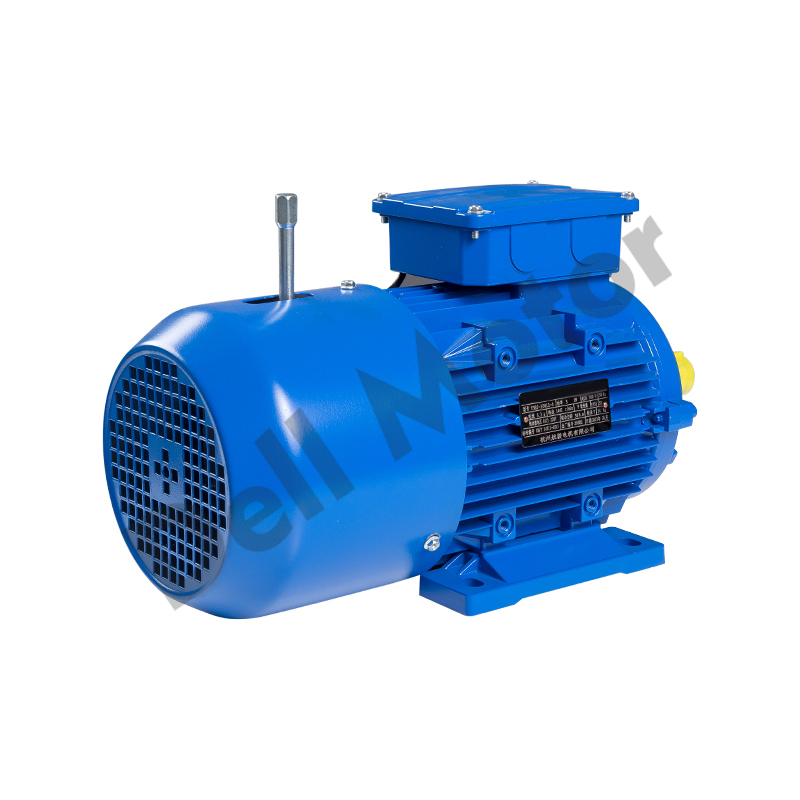The three-phase induction motor is one of the most widely used electric motors in industrial and commercial applications. Known for its robust design, high efficiency, and reliable performance, this motor plays a vital role in driving machinery across various sectors. Whether it's powering pumps, compressors, fans, or conveyor systems, the three-phase induction motor remains a cornerstone of modern electrical engineering.
A three-phase induction motor , also commonly referred to as an asynchronous motor , operates on the principle of electromagnetic induction. Unlike synchronous motors, these motors do not require any external DC excitation for their rotor winding. Instead, they rely on the rotating magnetic field generated by the stator windings when connected to a three-phase AC power supply.
This type of motor consists of two main parts: the stator (the stationary part) and the rotor (the rotating part). The stator contains three sets of windings spaced 120 degrees apart, which create a rotating magnetic field when energized by a three-phase current. This field induces a current in the rotor conductors, producing torque and causing the rotor to turn.
Types of Three-Phase Induction Motors
Three-phase induction motors can be broadly categorized into two types:
Squirrel Cage Induction Motor :
This is the most common type due to its simple and rugged construction. The rotor resembles a squirrel cage, hence the name, with aluminum or copper bars short-circuited by end rings. These motors are known for their low maintenance and cost-effectiveness.
Slip Ring or Wound Rotor Induction Motor :
These motors feature a wound rotor with slip rings that allow for external resistance to be added to the rotor circuit. This configuration provides better control over starting torque and speed, making them suitable for heavy-duty applications like cranes and elevators.

Working Principle
The operation of a three-phase induction motor hinges on the concept of a rotating magnetic field (RMF) . When the stator windings are supplied with balanced three-phase current, a uniform RMF is produced. This field cuts across the rotor conductors, inducing an electromotive force (EMF) in them according to Faraday’s law of electromagnetic induction.
Since the rotor conductors are short-circuited, the induced EMF causes a current to flow, which interacts with the RMF to generate torque. As a result, the rotor begins to rotate in the same direction as the RMF, although at a slightly slower speed—this difference in speed is known as slip .
Advantages of Three-Phase Induction Motors
There are several reasons why three-phase induction motors dominate industrial applications:
High Efficiency and Power Factor : These motors operate efficiently under full load conditions and maintain a decent power factor.
Simple and Durable Construction : With no brushes or commutators, especially in squirrel cage types, these motors are less prone to wear and tear.
Self-Starting Capability : Unlike single-phase induction motors, three-phase versions are inherently self-starting.
Cost-Effective : They are relatively inexpensive compared to other motor types and offer long service life.
Low Maintenance Requirements : Fewer moving parts mean fewer breakdowns and lower servicing needs.
Applications Across Industries
The versatility of three-phase induction motors makes them ideal for use in a wide range of industries:
Manufacturing Plants : Driving machines such as lathes, milling machines, and CNC equipment.
HVAC Systems : Used in air conditioning units, chillers, and ventilation systems.
Pumps and Compressors : Handling fluid movement in water treatment plants, oil refineries, and gas pipelines.
Conveyor Belts : Transporting materials in mining, packaging, and automotive assembly lines.
Elevators and Cranes : Especially slip ring types for controlled lifting and lowering operations.
Factors Affecting Performance
Several factors influence the performance of a three-phase induction motor :
Supply Voltage and Frequency : Variations in voltage or frequency can affect speed and torque characteristics.
Load Conditions : Overloading can lead to overheating and reduced lifespan.
Cooling Mechanism : Proper ventilation or cooling systems are essential to prevent thermal damage.
Starting Methods : Different starting techniques like star-delta starters, auto-transformer starters, and soft starters can impact motor behavior during startup.


 English
English 中文简体
中文简体








.jpg?imageView2/2/format/jp2)






